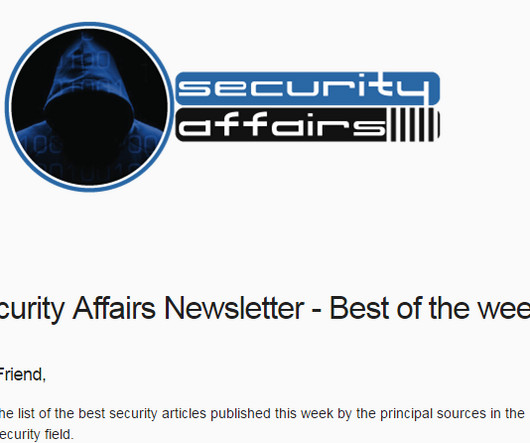Global AI computing will use 'multiple NYCs' worth of power by 2026, says founder
Collaboration 2.0
DECEMBER 3, 2024
AI computing will continue to soar with inference, requiring completely new multiple-gigawatt AI data centers.
This site uses cookies to improve your experience. To help us insure we adhere to various privacy regulations, please select your country/region of residence. If you do not select a country, we will assume you are from the United States. Select your Cookie Settings or view our Privacy Policy and Terms of Use.
Cookies and similar technologies are used on this website for proper function of the website, for tracking performance analytics and for marketing purposes. We and some of our third-party providers may use cookie data for various purposes. Please review the cookie settings below and choose your preference.
Used for the proper function of the website
Used for monitoring website traffic and interactions
Cookies and similar technologies are used on this website for proper function of the website, for tracking performance analytics and for marketing purposes. We and some of our third-party providers may use cookie data for various purposes. Please review the cookie settings below and choose your preference.
 2026 Related Topics
2026 Related Topics 
Collaboration 2.0
DECEMBER 3, 2024
AI computing will continue to soar with inference, requiring completely new multiple-gigawatt AI data centers.

Krebs on Security
DECEMBER 3, 2024
ICANN’s proposed next round envisions accepting applications for new gTLDs in 2026. Incredibly, despite years of these reports showing phishers heavily abusing new gTLDs, ICANN is shuffling forward on a plan to introduce even more of them. John Levine is author of the book “The Internet for Dummies” and president of CAUCE.
This site is protected by reCAPTCHA and the Google Privacy Policy and Terms of Service apply.

Collaboration 2.0
NOVEMBER 22, 2024
Here's what we know about 'LLM Siri.'

Data Breach Today
OCTOBER 18, 2024
Matt Cohen on How CyberArk Plans to Unify Machine, Human Identity Security by 2026 CyberArk's $1.54 billion acquisition of Venafi strengthens its leadership in identity security, integrating machine identity management with its current human identity platform, according to CEO Matt Cohen.

Security Affairs
MAY 26, 2022
Below is the link to the strategy: The NATIONAL CYBERSECURITY STRATEGY 2022 – 2026 ; Italian cybersecurity agency ACN also published the implementation plan which provides for each goal defined in the National Cybersecurity Strategy the measures to implement: IMPLEMENTATION PLAN, NATIONAL CYBERSECURITY STRATEGY 2022 – 2026; Security Affairs is one (..)

Data Breach Today
DECEMBER 2, 2024
The proposed rule will go into effect in 2026.

Data Breach Today
DECEMBER 3, 2024
The proposed rule will go into effect in 2026.

Collaboration 2.0
SEPTEMBER 23, 2024
Slated to go public in 2026, Intel's programmable chip group found surprising successes but also setbacks in nine years inside the chip giant.

Collaboration 2.0
NOVEMBER 13, 2024
A security camera will follow in 2026. Reportedly a wall-mounted, 6-inch screen with front-facing camera, the smart display would be Apple's answer to smart-home rivals Google and Amazon.

Data Breach Today
MARCH 27, 2025
NAB's Anthony Hope on How Banks Are Preparing for the March 2026 Deadline Australia's anti-money laundering and counter-terrorism financing legislation is undergoing its first major revision since 2006. Anthony Hope, group head of AML, CTF and fraud risk at NAB, explains what this "generational change" means for financial institutions.

Security Affairs
APRIL 21, 2024
Target: Gift Cards Ransomware Victims Who Pay a Ransom Drops to Record Low 840-bed hospital in France postpones procedures after cyberattack Malware Unpacking the Blackjack Group’s Fuxnet Malware LightSpy Returns: Renewed Espionage Campaign Targets Southern Asia, Possibly India Cerber Ransomware: Dissecting the three heads Kapeka: A novel backdoor (..)

Data Breach Today
JANUARY 13, 2025
In response, the National Automated Clearinghouse Association is pushing for real-time fraud monitoring by 2026, requiring closer collaboration between fraud and AML teams. Experts Weigh the Pros and Cons of Work Culture and Merging AML and Fraud Teams A recent report found that more than 57,000 Americans fall victim to scams every day.

Data Matters
DECEMBER 19, 2024
On December 10, 2024, the Centers for Medicare & Medicaid Services (CMS) published a proposed rule with technical changes for the Medicare Advantage (MA) Program and the Medicare Prescription Drug Benefit Program for Calendar Year 2026 (Proposed Rule).

Security Affairs
FEBRUARY 4, 2024
Man Charged in SIM-Swapping Spree is Key Suspect in Hacker Groups Oktapus, Scattered Spider Data of 750 Million Indian Mobile Subscribers Sold on Hacker Forums Hackers steal $112 million of XRP Ripple cryptocurrency movie2k.to: Ex-operator hands over BTC worth 2 billion euros Portland Man Sentenced to Federal Prison for Role in SIM Swapping Identity (..)

The Last Watchdog
APRIL 25, 2023
Open source coding has come to dominate business software applications; rising to comprise 75 percent of audited code bases and putting open source on a trajectory to become a $50 billion subsector of technology by 2026.

The Last Watchdog
FEBRUARY 20, 2024
By 2026, the integration of conversational AI in contact centers will lead to a substantial $80 billion reduction in labor costs for agents. Forty-eight percent of consumers favor their efficiency prioritization.

Information Matters
FEBRUARY 23, 2024
The decline will be driven by the Read more The post Search Volume to Drop 25% by 2026 Due to AI Agents, Predicts Gartner appeared first on Information Matters - Where AI Meets Knowledge Management. Search engine volume is expected to fall by 25% over the next few years, according to a new prediction by research firm Gartner.

The Last Watchdog
SEPTEMBER 6, 2022
The global market for managed security services is estimated to be growing at a compound annual rate of 14 percent and should climb to $44 billion by 2026 , up from $23 billion in 2021, says research firm MarketsandMarkets.

Dark Reading
MAY 11, 2023
billion annually by 2026. New data shows cyberattacks targeting software supply chains will cost the global economy $80.6

National Archives Records Express
AUGUST 2, 2021
The final Strategic Plan will be published in February 2022 and will become the agency’s official plan for fiscal years 2022 through 2026. Feedback will be collected and considered, and the draft plan will be revised and then shared with the Office of Management and Budget by September 13.

Hunton Privacy
JULY 6, 2021
On June 30, 2021, the Centre for Information Policy Leadership (“CIPL”) at Hunton Andrews Kurth submitted its comments on the Irish Data Protection Commissioner’s (“DPC”) consultation on its Draft Regulatory Strategy for 2021-2026, in which the DPC sets out its vision for the next five years.

Hunton Privacy
MARCH 3, 2022
AB 2871 would extend the HR and B2B exemptions indefinitely, while AB 2891 would extend the exemptions only until 2026. The existing temporary “HR” and “B2B” exemptions were first introduced through amendments to the CCPA, and were extended by the CPRA, under which the exemptions will sunset on the CPRA’s compliance deadline, January 1, 2023.

IG Guru
JUNE 27, 2023
President-Elect/Treasurer (2024-2026) Regent, Exam Administration and Member Relations (2024-2025) Regent, Legislation and Appeals […] 2024 Open Board of Regent Positions Active CRMs in good standing are invited to apply for candidacy to a Board of Regents position. CRAs are not eligible to serve on the Board Regents.

OpenText Information Management
MAY 18, 2021
billion by 2026. The enterprise resource planning (ERP) software market is set for rapid growth. Worth approximately $39 billion in 2019, it is set to reach $78.4 Organizations of all sizes are increasingly looking to ERP to help drive their business. And yet, data quality remains a major challenge, undermining the value of these investments.

IG Guru
JULY 24, 2023
The ICRM is pleased to announce the following candidates for the ICRM 2023 Elections: President-Elect/Treasurer (2024-2026) Tim O’Toole, CRM, IGP Regent, Exam Administration and Member Relations (2024-2025) Jeremy Bolton, CRM, IGP Dr. Todd D.

Hunton Privacy
AUGUST 30, 2022
These prohibitions would remain in effect until January 1, 2026. The amendments in AB-1102 are time-sensitive, as the California legislature adjourns its session on August 31, 2022.

The Last Watchdog
SEPTEMBER 11, 2023
Gartner predicts that by 2026, organizations that prioritize AI transparency, trust, and security will witness a 50% boost in adoption, business goals, and user acceptance of their models. To accomplish this, the broader Decision Intelligence strategy should encompass the integration of techniques like graph analytics and entity resolution.

CILIP
NOVEMBER 14, 2024
After completing her term as Vice President for 2025, she will move on and become CILIP President in 2026.

Thales Cloud Protection & Licensing
APRIL 3, 2024
The CMVP no longer accepts submissions for FIPS 140-2, and existing 140-2 certifications are slated to become historical beginning September 2026. First, it is important to point out that the introduction of FIPS 140-3 started the clock on sunsetting the previous iteration of the standard.

IBM Big Data Hub
NOVEMBER 8, 2023
Though the rule doesn’t go into effect until January 2026, companies must proactively and strategically prepare their supply chain now, as this complex regulation will require companies to collect and maintain detailed information about the ingredients, processing and distribution of certain products.

IG Guru
AUGUST 28, 2023
President-Elect/Treasurer (2024-2026) Tim O’Toole, CRM, IGP Regent, Exam Administration and Member Relations (2024-2025) Dr. Todd D. We are pleased to announce the results of this year’s Board of Regents Elections.

The Last Watchdog
AUGUST 4, 2021
And, indeed, the global WAF market is growing annually at an estimated 17 percent clip ; companies are projected to spend $8 billion on WAF services by 2026, up from $3.2 And WAF suppliers have been upping their game as well, providing richer threat analysis and reducing the rate of false positives.

Information Management Resources
DECEMBER 12, 2019
The market continues to grow, as organizations strive to get a unified view of the information they are gathering from enterprise applications, Web sites, social media, mobile devices and the Internet of Things.

The Last Watchdog
APRIL 9, 2020
trillion by 2026, up from $190 billion in 2018. For a full drill down on our conversation, give the accompanying podcast a listen. Here are the key takeaways: IoT surge According to Fortune Business Insights, the global IoT market will top $1.1 That’s a compounded annual growth rate of a whopping 24.7

OpenText Information Management
AUGUST 29, 2024
IDC’s Global DataSphere predicts that, over the next five years, data will grow at a compound annual growth rate of 21.2%, reaching more than 221,000 exabytes (an exabyte is 1,000 petabytes) by 2026. This data explosion poses a critical challenge even before delving into AI.

Information Management Resources
NOVEMBER 20, 2019
billion by 2026, expanding at a compound annual growth rate of 31 percent, according to research firm Reports and Data. The global chatbot market was valued at $1.17 billion in 2018 and is expected to reach $10.08

Data Protection Report
SEPTEMBER 20, 2024
The new law does not take effect until January 1, 2026. On September 19, 2024, California enacted another law relating to artificial intelligence, this time relating to watermarking. The new law ( SB 942 ) requires making certain AI detection tools available at no cost to users.

Dark Reading
JUNE 1, 2022
Password management solution delivers proactive, seamless approach to protecting privacy and login credentials for consumers and businesses; Password Management market expected to reach $3 billion by 2026.

DXC Technology
AUGUST 19, 2019
The race is on to develop fully autonomous cars, with all of the traditional automotive manufacturers competing against upstarts like Tesla, Uber, and Google’s Waymo to capture a piece of the self-driving vehicle market that is expected to reach $557 billion by 2026, according to Allied Market Research.

Data Matters
AUGUST 18, 2023
The Act will take effect on July 1, 2024, except for some provisions that will not take effect until January 1, 2026. Rosenblum, comprising 150 consumer privacy experts from various industries. The post Oregon Enacts Comprehensive Consumer Data Privacy Law appeared first on Data Matters Privacy Blog.

Collibra
JANUARY 31, 2025
And by 2026, 18 states will have implemented comprehensive privacy frameworks. In 2020, California stood alone with CCPA, charting new territory in consumer privacy rights. By 2023, we saw Virginia, Colorado and Utah join with their comprehensive frameworks. Let that sink in.

Information Management Resources
OCTOBER 29, 2019
will see large growth for tech-related roles in non-tech industries such as finance, consulting and retail. However, many traditional jobs will undoubtedly rise through the ranks as technology continues to develop.

IBM Big Data Hub
OCTOBER 4, 2023
Consider this, a forecast by IDC shows that global spending on AI will surpass $300 billion in 2026, resulting in a compound annual growth rate (CAGR) of 26.5% from 2022 to 2026. Why does AI need an open data lakehouse architecture?

Dark Reading
JANUARY 23, 2023
(..)
Expert insights. Personalized for you.
We have resent the email to
Are you sure you want to cancel your subscriptions?

Let's personalize your content